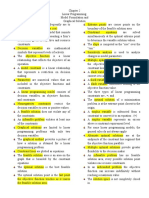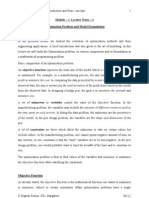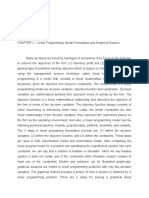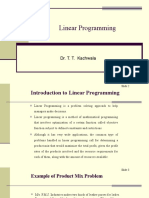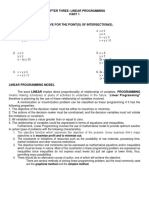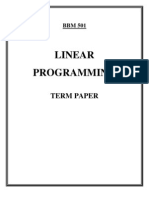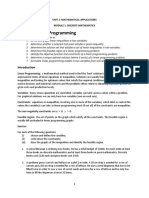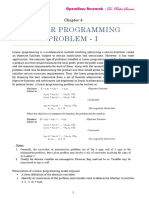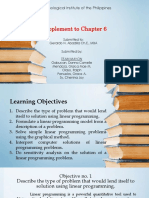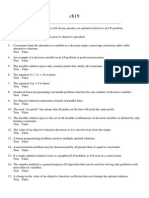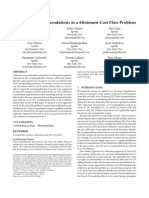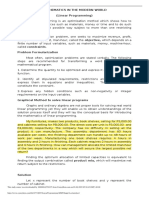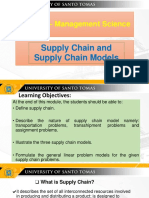0% found this document useful (0 votes)
63 views19 pagesNumerical Methods Optimization
The document discusses various optimization methods for finding the minimum or maximum of functions, including one-dimensional unconstrained methods like golden-section search and Newton's method, as well as constrained optimization techniques such as linear programming. Linear programming involves defining an objective function and constraints to optimize problems, and can be solved graphically or using the simplex method as shown through an example maximizing profit under capacity constraints.
Uploaded by
ahmad ramdanCopyright
© © All Rights Reserved
We take content rights seriously. If you suspect this is your content, claim it here.
Available Formats
Download as PPTX, PDF, TXT or read online on Scribd
0% found this document useful (0 votes)
63 views19 pagesNumerical Methods Optimization
The document discusses various optimization methods for finding the minimum or maximum of functions, including one-dimensional unconstrained methods like golden-section search and Newton's method, as well as constrained optimization techniques such as linear programming. Linear programming involves defining an objective function and constraints to optimize problems, and can be solved graphically or using the simplex method as shown through an example maximizing profit under capacity constraints.
Uploaded by
ahmad ramdanCopyright
© © All Rights Reserved
We take content rights seriously. If you suspect this is your content, claim it here.
Available Formats
Download as PPTX, PDF, TXT or read online on Scribd
/ 19

